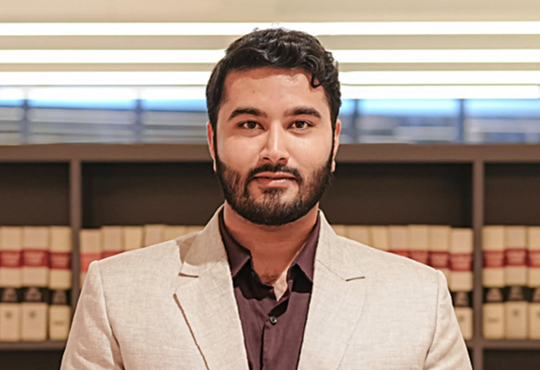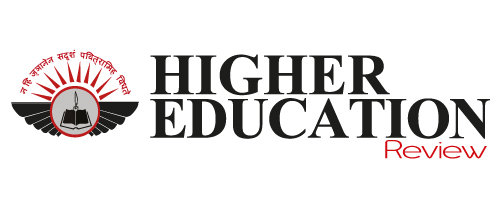Enhancing Student Experience & Institutional Excellence Through Agile, and Tech-Enabled Ecosystems in Universities
 Subramanya V Mysore, Deputy Director Administration at RV University in an interaction with Higher Education Review shared his views on how non-academic operations contribute to the overall student experience and institutional excellence in universities, how can administrative and support teams drive innovation with the help of technology within campus infrastructure, services, and student life and more.
Subramanya V Mysore, Deputy Director Administration at RV University in an interaction with Higher Education Review shared his views on how non-academic operations contribute to the overall student experience and institutional excellence in universities, how can administrative and support teams drive innovation with the help of technology within campus infrastructure, services, and student life and more.
How do non-academic operations contribute to the overall student experience and institutional excellence in universities?
A university is a body corporate which reflects the features of an organization with multifarious core and support functions. Universities have core functions of teaching, research and learning while in parallel have support functions such as finance, human resources, facilities, outreach, media & communication, placement & training among others. So as long as these support functions are carried out to their best potential, the core function of teaching and learning naturally flourishes. For instance, if university infrastructure is made disabled friendly, gender sensitive, tech driven and is sustainable, end users stand to benefit holistically for quality services. If finances are strategically managed for expenses on capital purchases, campus development and lean operations, then the organic growth of the university is a matter of time. If outreach activity is undertaken diligently then the underserved regions that bear cultural and ethnic diversity gain access to top notch education. Similarly, if thought leading faculties are hired on a timely basis, learning outcomes of students and research weightage of the institution excels. In sum, core and support functions are co-dependent facets of the same realm and both these facets contribute to institutional excellence in their own unique way.
In what ways can administrative and support teams drive innovation with the help of technology within campus infrastructure, services, and student life?
Administrative innovation may be attained through inclusive mediums of effective workplace policies, cutting-edge research, root cause coupled with end user feedback analysis. The common point across all mediums would be the calculated blending of technology in right areas. Accordingly, universities have employed tech in - Admissions with platforms enabled to extrapolate data on conversion rates, in demand courses, and market accepted fee ranges. Placements - dashboards can produce data on salary ranges on offer vis-a-vis recruiters, skills required vis-a-vis aspired industry, placement to attrition rates and build recruiter inventory. Campus Operations - app based vending machines, visitor management platforms with entry against identification feature, auditorium/hall management tools, student grievance redressal/reporting-based ticketing tools with set turnaround time and student residence allocation and leave management platforms and sensor-based lighting and parking spots management platforms. Additionally, ERPs are aplenty for classroom allocations, timetable management, proctored examinations and asset/consumable purchase order management.
What role do university support teams play in ensuring student mental health, well-being, and holistic development?
About 10.6% of the adult population in India suffers with mental disorders and 70% to 92% of Indian population with mental disorders does not receive appropriate treatment as per National Mental Health Survey 2015-16. Considering these glaring aspects, universities as per UGC guidelines varsities must set up professional in campus counselling services with dedicated 24x7 helpline and wellbeing mobile applications that are accessible by students at their fingertips. The counselling service must have preliminary diagnostic and prescriptive care available on a zero cost, safe and confidential basis. “Campus buddy” initiative would partner a senior with a junior student and the former would guide the latter on all academic, co and extracurricular aspects of campus life. This mechanism eliminates the stereotype associated with senior/junior relationships and strengthens the student community. Instances of having green lung spaces and oxyzones with oxygen and medicinal rich plants in designated areas have contributed overall mood upliftment of students. Similarly, constant supply of information, education and communication campaigns on the importance of mental health and its upkeep via expert talk, meditative practices, hands on techniques/games etc. contribute immensely to mental health management. Flexible learning that enables learning on the go from students’ choice of device coupled with student clubs/groups focused on art, music, dance forms, cuisines, design, biodiversity conservation amongst others have positively impacted students to mold themselves holistically and with robust confidence.
What are the best practices for integrating student feedback into non-academic service improvements?
University is ultimately a student driven ecosystem that thrives on student improvement. It is because the student community exists, the organisational entity exists. Therefore, their feedback is instrumental for improvements at all levels especially for campus services. For instance, fresher students reported to have anxiety at the University of British Columbia while making new friends, this feedback led to organisation of team games and events on art, drama and music resulted in 81% students reporting sense of belongingness at their university. Having students as hostel and canteen services execution committee members who actively set the food menu, take part in purchase of inputs, review facilities and oversee general hygiene led to an increase of 81% student satisfaction at Christ University. Accessibility services such as ramps, wheelchairs, tactile flooring etc. were installed widely based on student feedback leading to 78% increase in campus accessibility at Jawaharlal Nehru University. Female students reported that they felt less safe compared to their male counterparts at campus, to counter this well-lit spaces with CCTV coverage, self defence training, recruitment of female security personnel and a SOS campus app were devised which resulted in 33% increase in sense of safety at Tata Institute of Social Sciences.
How can universities build resilient and agile non-academic ecosystems to adapt to evolving global education trends and student needs?
It is reported in Deloitte’s Campus Workforce Report (2023) that 43% of employers find Gen Z need drastic improvements in communication and teamwork. While NASSCOM FutureSkills survey (2023) reports that 62% of employers felt Gen Z lacked basic critical reasoning and problem-solving abilities. This rings alarm bells for training this generation in soft skills that real life beyond university requires through bite sized/micro scale gamified content that draws their shortened attention. Another trend is that the global youth is moving towards self-employment, as it offers dynamic work, proximity with real life problem solving opportunities coupled with increased appetite for risk. Therefore, student-led startup incubation from prototyping to rollout, from seed to multiple rounds of funding, sharing of sound technical know-how with industry expert-led mentorship has become paramount at universities. Similarly, one more facet for keeping up with futuristic needs is through the Massive Open Online Courses (MOOCs) and digital Learning Management Systems (LMS) that offer flexibility, access to industry SMEs with precision course content for customized needs of a student based on their aspiration vis-a-vis industry acceptance.

.jpg)